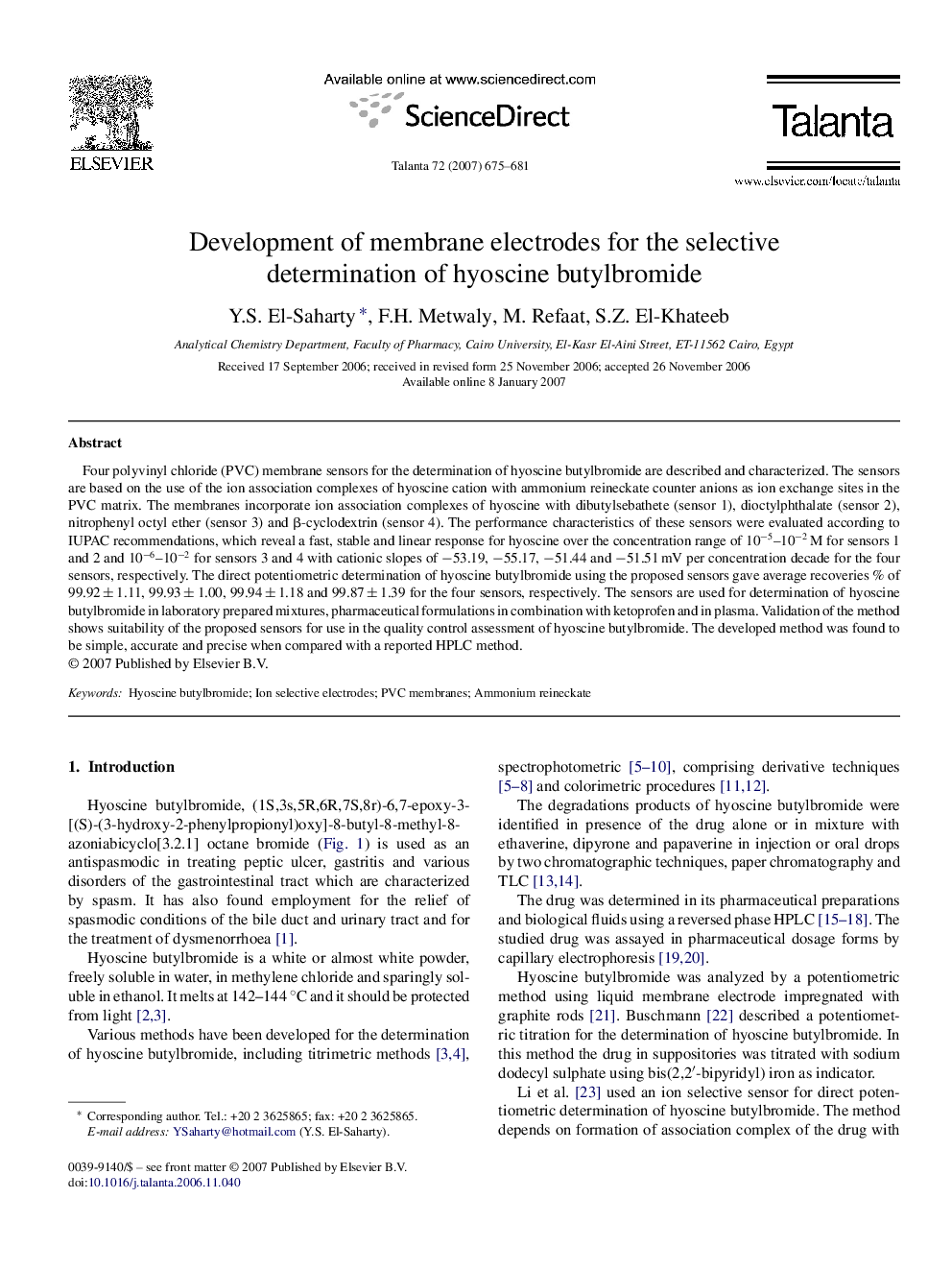| Article ID | Journal | Published Year | Pages | File Type |
|---|---|---|---|---|
| 1245994 | Talanta | 2007 | 7 Pages |
Four polyvinyl chloride (PVC) membrane sensors for the determination of hyoscine butylbromide are described and characterized. The sensors are based on the use of the ion association complexes of hyoscine cation with ammonium reineckate counter anions as ion exchange sites in the PVC matrix. The membranes incorporate ion association complexes of hyoscine with dibutylsebathete (sensor 1), dioctylphthalate (sensor 2), nitrophenyl octyl ether (sensor 3) and β-cyclodextrin (sensor 4). The performance characteristics of these sensors were evaluated according to IUPAC recommendations, which reveal a fast, stable and linear response for hyoscine over the concentration range of 10−5–10−2 M for sensors 1 and 2 and 10−6–10−2 for sensors 3 and 4 with cationic slopes of −53.19, −55.17, −51.44 and −51.51 mV per concentration decade for the four sensors, respectively. The direct potentiometric determination of hyoscine butylbromide using the proposed sensors gave average recoveries % of 99.92 ± 1.11, 99.93 ± 1.00, 99.94 ± 1.18 and 99.87 ± 1.39 for the four sensors, respectively. The sensors are used for determination of hyoscine butylbromide in laboratory prepared mixtures, pharmaceutical formulations in combination with ketoprofen and in plasma. Validation of the method shows suitability of the proposed sensors for use in the quality control assessment of hyoscine butylbromide. The developed method was found to be simple, accurate and precise when compared with a reported HPLC method.
